- Home
- Tove Jansson
The Woman Who Borrowed Memories: Selected Stories
The Woman Who Borrowed Memories: Selected Stories Read online
TOVE JANSSON (1914–2001) was born in Helsinki into Finland’s Swedish-speaking minority. Her father was a sculptor and her mother a graphic designer and illustrator. Winters were spent in the family’s art-filled studio and summers in a fisherman’s cottage in the Pellinge archipelago, a setting that would later figure in Jansson’s writing for adults and children. Jansson loved books as a child and set out from an early age to be an artist. Her first illustration was published when she was fifteen years old; four years later a picture book appeared under a pseudonym. After attending art schools in both Stockholm and Paris, she returned to Helsinki, where in the 1940s and ’50s she won acclaim for her paintings and murals. From 1929 until 1953 Jansson drew humorous illustrations and political cartoons for the left-leaning anti-Fascist Finnish-Swedish magazine Garm, and it was there that what was to become Jansson’s most famous creation, Moomintroll, a hippopotamus-like character with a dreamy disposition, made his first appearance. Jansson went on to write about the adventures of Moomintroll, the Moomin family, and their curious friends in a long-running comic strip and in a series of books for children that have been translated throughout the world, inspiring films, several television series, an opera, and theme parks in Finland and Japan. Jansson also wrote eleven novels and short-story collections for adults, including The Summer Book, The True Deceiver, and Fair Play (available as NYRB Classics). In 1994 she was awarded the Prize of the Swedish Academy. Jansson and her companion, the artist Tuulikki Pietilä, continued to live part time in a cottage on the remote outer edge of Pellinge until 1991.
THOMAS TEAL has translated many of Tove Jansson’s works into English, beginning in the 1970s with The Summer Book and Sun City and more recently, The True Deceiver (2009, winner of the Best Translated Book Award) and Fair Play (2011, winner of the Bernard Shaw Prize for translation from the Swedish). He lives in Massachusetts.
SILVESTER MAZZARELLA is a translator of Italian and Swedish literature. For many years he lived in Finland, where he taught English literature at the University of Helsinki. His most recent translation from the Swedish is Tove Jansson: Life, Art, Words by Boel Westin (2014). He now lives in Canterbury, England.
LAUREN GROFF is the author of the novels Arcadia and The Monsters of Templeton, and Delicate Edible Birds, a story collection. Her work has appeared in The New Yorker, Harper’s, and The Atlantic Monthly, as well as in the Pushcart Prize, PEN/O. Henry, and Best American Short Stories anthologies. She lives in Gainesville, Florida.
THE WOMAN WHO BORROWED MEMORIES
Selected Stories
TOVE JANSSON
Translated from the Swedish by
THOMAS TEAL and
SILVESTER MAZZARELLA
Introduction by
LAUREN GROFF
NEW YORK REVIEW BOOKS
New York
THIS IS A NEW YORK REVIEW BOOK
PUBLISHED BY THE NEW YORK REVIEW OF BOOKS
435 Hudson Street, New York, NY 10014
www.nyrb.com
Copyright © 2014 by NYREV, Inc.
Stories copyright © 1971, 1978, 1987, 1991, 1998 by Tove Jansson
Translations copyright © 2005, 2006, 2010 by Silvester Mazzarella and Sort Of Books
Translations copyright © 2012, 2013, 2014 by Thomas Teal and Sort Of Books
Introduction copyright © 2014 by Lauren Groff
All rights reserved.
Stories first published in Swedish by Schildts Förlags Ab, Finland
Translations first published in English in A Winter Book (2006), Travelling Light (2010), Art in Nature (2012), and The Listener (2013) by Sort Of Books, London
Cover image: Tove Jansson wearing a birthday garland, Klovharu, Finland; photograph © Per Olov Jansson
Cover design: Katy Homans
Library of Congress Cataloging-in-Publication Data
Jansson, Tove.
[Short stories. Selections. English]
The woman who borrowed memories : selected stories / by Tove Jansson ; introduction by Lauren Groff ; translation by Thomas Teal and Silvester Mazzarella.
1 online resource. — (New York Review Books classics)
ISBN 978-1-59017-793-8 — ISBN 978-1-59017-766-2 (alk. paper)
I. Teal, Thomas, translator. II. Mazzarella, Silvester, translator. III. Title.
PT9875.J37
839.73'74—dc23
2014028207
ISBN 978-1-59017-793-8
v1.0
For a complete list of books in the NYRB Classics series, visit www.nyrb.com or write to: Catalog Requests, NYRB, 435 Hudson Street, New York, NY 10014.
CONTENTS
Biographical Notes
Title Page
Copyright and More Information
Introduction
FROM THE LISTENER (1971)
The Listener
Black-White
The Other
The Storm
The Wolf
The Squirrel
FROM THE DOLL’S HOUSE (1978)
The Monkey
The Cartoonist
White Lady
The Doll’s House
A Leading Role
The Locomotive
A Memory from the New World
FROM TRAVELING LIGHT (1987)
An Eightieth Birthday
The Summer Child
A Foreign City
The Woman Who Borrowed Memories
Traveling Light
The Garden of Eden
Shopping
The Gulls
Correspondence
FROM LETTERS FROM KLARA (1991)
Letters from Klara
FROM MESSAGES: SELECTED STORIES, 1971–1997 (1998)
My Beloved Uncles
Letters to Konikova
Messages
INTRODUCTION
TOVE JANSSON is a writer of islands.
This sentence is slippery, “of” being the operative word. From the time she was very small, islands were important to Jansson, as her family spent their summers in the stony, windswept Pellinge archipelago in southern Finland. The family belonged to the tiny minority of Swedish-speaking Finns, and both of Jansson’s parents were artists, her father a sculptor and her mother an illustrator. All summer, in their happy isolation, the little girl and her brothers swam and fished and ran, did their chores, told stories by firelight, and drew. Throughout her life, she would return again and again to islands as a setting in her work. Her motto became “Work and Love,” and she committed to both with a ferocious intensity.
Jansson, bright and precocious, wrote and illustrated her first picture book at age fourteen. Later she attended art academies and started her artistic life as a painter, accepting commissions for large-scale frescoes and exhibiting when she could. To support herself, she took on steady illustration work for magazines and books. During World War II, when she was thirty-one, Jansson began to write and illustrate books for children about the Moomintrolls, a family of plump and kindly beasties, which combined a dark subterranean wit with a strong philosophical bent. Beginning in 1954, the Moomins became a syndicated comic strip and made Jansson rich and internationally famous. They also made her grindingly busy. She began to long for the isolation of her hungry early years, when her art was hers alone and she didn’t have to answer the thousands of letters sent every year from her young fans or live under the pressure of producing a weekly comic strip. Soon she built the first of her own series of cabins in the Pellinge islands and escaped for the summer to live among the eider ducks and thunderstorms. Later she brought along her lifelong companion and love, the artist Tuulikki Pietilä. When she found that she could at la
st leave the Moomin strip to her brother, Jansson returned to painting but found to her dismay that the gatekeepers of fine art had become wary of welcoming a famous cartoonist back into their ranks.
And so in 1968, when she was fifty-four years old, Jansson began to write books for adults. She found a joy in the demands of this new literary form. In her (to me, perfect) 1972 novel, The Summer Book, Jansson writes “An island can be dreadful for someone from outside. Everything is complete, and everyone has his obstinate, sure and self-sufficient place. Within their shores, everything functions according to rituals that are as hard as rock from repetition, and at the same time they amble through their days as whimsically and casually as if the world ended at the horizon.” This quote doubles back on itself: It is a lovely description of physical islands, but also as a description of an artist during the steady and happy days of creation. In her very dark novel The True Deceiver, Jansson writes of a children’s book illustrator: “It was simply that she was only fully alive when she devoted herself to her singular ability to draw, and when she drew she was naturally always alone.” An artist is happiest alone in her work, focused, deep in the rituals the work necessitates. When writing, there is nothing beyond the story’s own urgent horizons.
Of her fifteen books for adults, Jansson wrote four as original short-story collections. “I love the short story,” she wrote in a note in 1990, “concentrated and united around a single idea. There must be nothing unnecessary in it, one must be able to hold the tale enclosed in one’s hand” (quoted in Boel Westin’s excellent and comprehensive 2014 biography, Tove Jansson: Life, Art, Words). Short stories are themselves islands, spare and self-contained. A collection is formed of separate works, whole unto themselves, and yet borne of the same geologic pressures; the book you have in your hands, culled from stories published over the span of five books and twenty-five years, is in many ways an aerial map of Jansson’s deepest concerns. Most artists are given a few urgent themes that they will endlessly circle and explore in their lives. From the gull’s-eye view of a collection of selected stories, patterns emerge, a larger story is told.
Jansson returned again and again to the themes of painting and drawing, the intensity of close attention, the celebration of visual beauty, the lure of travel, the strange magic that takes place when the natural world meets the human, and, most pervasively, the terror of imminent disaster just out of sight. In the happy valley where the Moomins live, a flood comes that obscures the earth and sets the Moomin family afloat; a comet nears, threatening all life, and driving even the waters of the ocean away to hide. Likewise, a sense of danger lurks at the edges of most of the stories in The Woman Who Borrowed Memories: an old couple painfully survives after an apocalypse (“Shopping”); a winter storm pushes threateningly into the apartment of a woman who is unhappy in love (“The Storm”); an old acquaintance steals a woman’s memories until the robber, in effect, ends up appropriating the other woman’s life (“The Woman Who Borrowed Memories”). Most of these stories spin around isolates, people who stand sturdily in the center of the tales, watching the way others move in the world around them. The awful child Elis who visits the family on their happy island in the hilarious “The Summer Child” is distanced from humanity by his clear-sighted recognition of all things in the world that are inhumane; Erik in “The Doll’s House” is boxed out of his lover’s passion for building a dollhouse by an unwelcome interloper; in the story “Letters to Konikova,” based on Jansson’s own letters to her friend the photographer Eva Konikova who emigrated to America, the narrator is furious at being left behind. Jansson’s characters long to connect at the same time that they fight helplessly and fiercely for their autonomy.
Jansson’s prose is so clear and her wit so sharp that it would be easy to overlook the terror that is the animating spirit for most of these stories. As the artist in “Black-White” writes, “No one can depict desolation who hasn’t inhabited desolation and observed it very closely. Things condemned have a terrible beauty.” It is the terrible beauty, this simultaneous dose of horror and splendor, that unites all of the art of Jansson, but particularly this selected edition of her decades of stories. In “The Garden of Eden,” kindly Viktoria goes for a walk in the little village in Spain that she’s visiting and is depressed to find herself in an awful place, full of stunted olive trees and dirty sheep and plastic bags that trip her, “a kind of rubbish dump, the unavoidable outskirts of any human paradise.” Then, in a breath, things change: “the setting sun broke through a gap in the mountain chain and the twilit landscape was instantly transformed and revealed; the trees and the grazing sheep enveloped in a crimson haze, a sudden, beautiful vision of biblical mystery and power. Viktoria thought she had never seen anything so lovely. She remembered once a set designer saying, ‘My job is to paint with light, that’s all it is. The right light at the right time.’ ”
The right light at the right time: One can hear Jansson, the academy-trained painter, here. The darkness is as essential as the joyous and equally perilous light. The light and the dark give each other definition. In “Black-White,” an artist pushes the thought a bit further, writing to his wife, “I see my work as pieces of reality or unreality carved at random from a long and ineluctable course of events—the darkness I draw continues on endlessly. I cut across it with narrow and dangerous shafts of light.”
There are videos online of Klovharu, the island where Jansson and Pietilä spent their summers into their eighties. The cabin is tiny; it has windows in all four directions so the women could see visitors coming from far off and prepare themselves. Outside, all is rock and wildflower, noisy with the constant waves and screams of the seabirds and high wind. There is no electricity. At night, they had to find their way by the light of kerosene lamps and stars. It is easy to imagine a storm black on the horizon, the breakneck oncoming rush of it. The birds quiet and hide as the darkness comes on. The wind begins to beat on the house, the waves spray the windows and obscure them, the rain crashes on the roof; it is all exhilarating, it feels as if the house will be swept at any moment off the rock and sent sailing into the ocean. Inside, there is a small circle of lamplight, there is work and love. The terror of what’s outside makes what’s inside warmer, gentler; the light presses bravely against the danger and darkness. We read Tove Jansson to remember that to be human is dangerous, but also breathtaking, beautiful.
—LAUREN GROFF
THE LISTENER
AUNT GERDA was fifty-five when it began, and the first sign of change was in her letters. They grew impersonal.
She was a quiet, well-to-do woman of ordinary appearance. Nothing about her was provocative, disturbing, or exaggerated. But she was a good letter writer. Not brilliant, of course, not amusing, but in her letters Aunt Gerda took up and examined every detail communicated to her without ever subjecting her correspondents to meddlesome advice. They had grown accustomed to the fact that she replied at once, not anxiously but with care and serious interest. Her letters often ended with a wish for a productive autumn or a pleasant spring, and this generous time limit seemed to give them full freedom to take their time with their next letter.
Reading one of Aunt Gerda’s letters was exciting, like reliving one’s own experiences, only this time dramatized and clarified on a wider stage, with a Greek chorus observing and underlining the action. And with the certain assurance that she would never reveal the confidences with which she was so often rewarded.
Now, and for some time past, Aunt Gerda waited weeks and months with her replies, and when she finally did write, her letters were marred by unworthy excuses, her handwriting had grown large and loose, and she wrote on only one side of the paper. And her masterfully detailed sympathy had lost its warmth.
When a person loses what might be called her essence—the expression of her most beautiful quality—it sometimes happens that the alteration widens and deepens and with frightening speed overwhelms her entire personality. This is what happened to Aunt Gerda. Soon she was drop
ping names, forgetting birthdays, faces, promises. She began coming late—the woman who always used to sit and wait on the steps and still be the first to arrive. Her tardy presents were too expensive, too big, too impersonal, and accompanied by embarrassing excuses. No longer the lovingly calculated gifts that she had made herself. No longer the pretty, touching Christmas cards put together from pressed flowers, angels, and occasional glitter. Now she bought expensive, glossy cards with printed wishes for joy and happiness.
As a result, the dispatches Aunt Gerda sent out bore sad witness to her transformation—a vast, depressing lack of attentiveness. People carry their loved ones with them. They are forever present, and life is full of easily grasped opportunities to show them one’s affection. It costs so little and achieves so much. Her siblings and nieces and nephews and friends all felt that Gerda had lost her style, her sense of responsibility, that she had grown self-centered from living alone—or perhaps it was the inescapable forgetfulness that comes with age. But deep down they knew that the change was deeper. It was inexplicable and basic and a matter of shifts in the mysterious stratum that forms a person’s character and worth.
Aunt Gerda was aware of what was happening to her, but she didn’t understand it. The acts and attitudes that had been a voluntary adaptation and concession to her own kindheartedness became very suddenly an overwhelming burden. She was plagued by self-reproach. Time, the passing hours, the need to be punctual was perhaps the most difficult of all. Days with an afternoon or evening invitation had their own timing, capricious and anxious even in the morning. In an odd way, they were bifurcated, so to speak. On the one side was Aunt Gerda’s genuine anticipation as she arranged the things she wanted to have with her when she left home. And on the other side was a great uncertainty with regard to names, faces, words, and the grasp of detail and context that must be complete for anyone who loves. On that side, too, was the enemy—time. Time that relentlessly approaches a certain predetermined second at which someone on the other side of a door begins to wait. A second is less than one breath, and everything that follows is too late, more and more too late. When Aunt Gerda approached the appointed time for departure, her unease became unbearable. She made peculiar mistakes, misread the clock, started doing small irrelevant chores. She grew suddenly tired and fell asleep in her chair, and if she’d set the alarm clock, she might go out on the stairs or into the attic for no reason at all just when it rang. When the poor woman finally managed to arrive—too late—she couldn’t keep herself from annoying her host and hostess with desperate and overly detailed excuses.

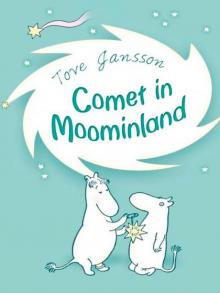 Comet in Moominland
Comet in Moominland Moominvalley in November
Moominvalley in November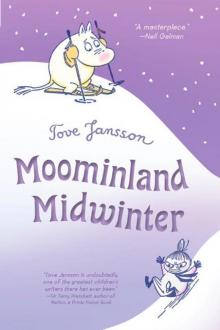 Moominland Midwinter
Moominland Midwinter Moominpappa's Memoirs
Moominpappa's Memoirs Sculptor's Daughter
Sculptor's Daughter The Listener
The Listener Tales From Moominvalley
Tales From Moominvalley Letters from Tove
Letters from Tove The Woman Who Borrowed Memories: Selected Stories
The Woman Who Borrowed Memories: Selected Stories Travelling Light
Travelling Light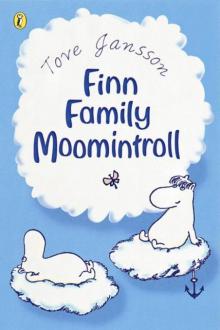 Finn Family Moomintroll
Finn Family Moomintroll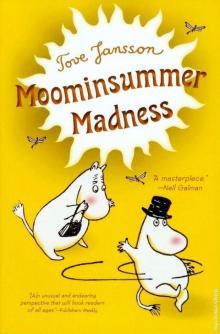 Moominsummer Madness
Moominsummer Madness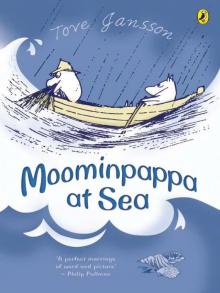 Moominpappa at Sea
Moominpappa at Sea Fair Play
Fair Play Letters From Klara
Letters From Klara Art in Nature
Art in Nature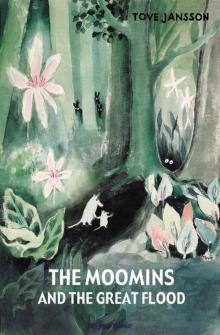 The Moomins and the Great Flood
The Moomins and the Great Flood The Exploits of Moominpappa
The Exploits of Moominpappa The Woman Who Borrowed Memories
The Woman Who Borrowed Memories